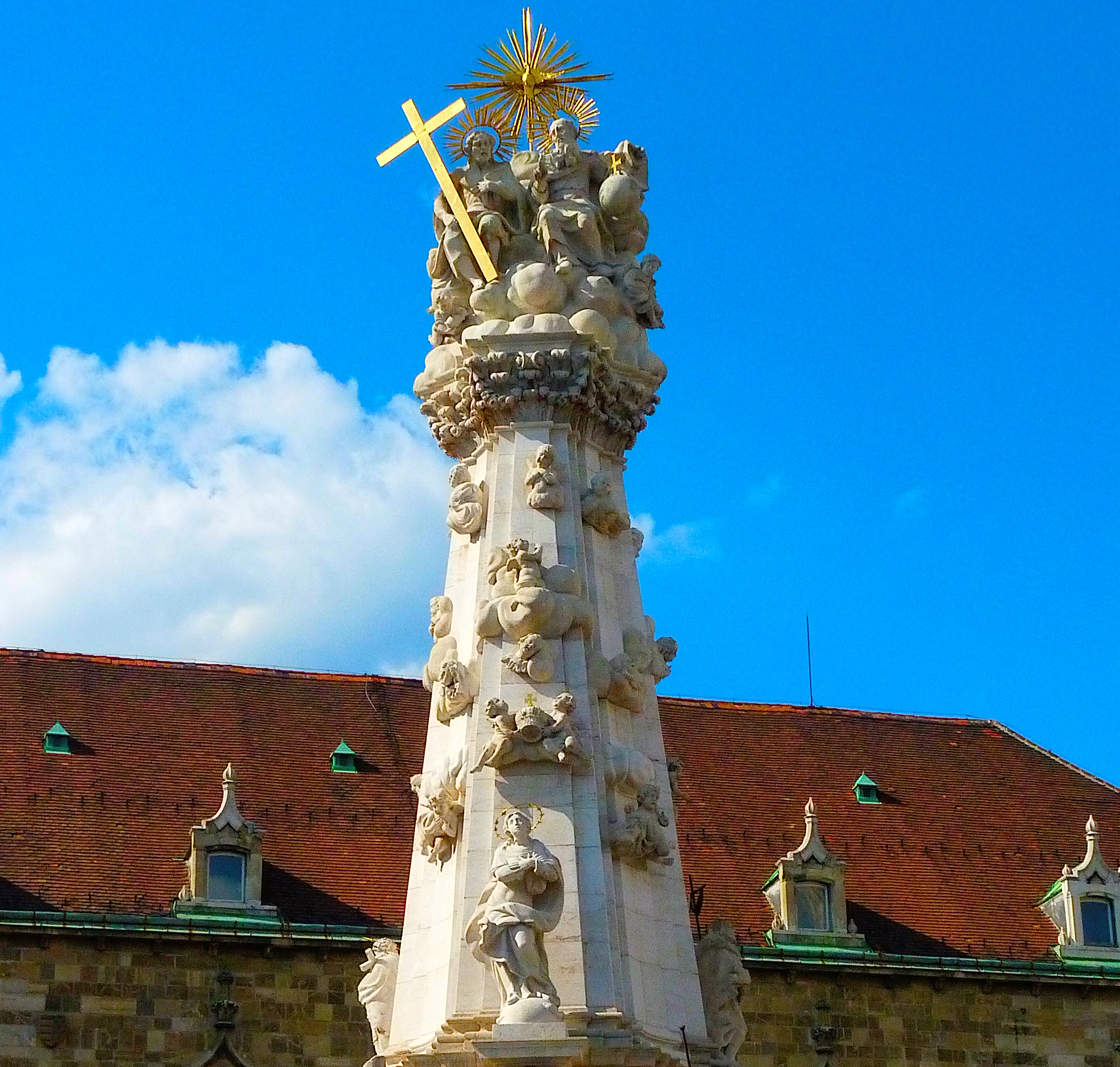The Holy Trinity Column, located in the heart of Budapest, Hungary, is a beautiful and historically significant Baroque monument. This religious plague column, also known as a “plague pillar,” stands in the central square of the Castle District, known as Trinity Square (Szentháromság tér), near Matthias Church and the Fisherman’s Bastion. Plague columns were common in European cities and towns in the 17th and 18th centuries, erected by survivors to give thanks for being spared from outbreaks of the plague and other calamities.
The Holy Trinity Column in Budapest is an ornate and intricately sculpted stone pillar crowned with a representation of the Holy Trinity. At the very top, there is a sculpture of the Holy Trinity, with God the Father and Christ the Son seated, and the Holy Spirit, represented as a dove, hovering above them. Beneath this grouping, an angel holds a crown over their heads.
The column is adorned with a host of other religious figures, including various saints who were important to the people of Budapest for their perceived ability to protect against the plague. One can find statues of St. Sebastian, known for his protection against epidemics, St. Roch, another patron saint of plague sufferers, and St. Elizabeth, among others. Each statue is expertly carved with attention to detail, adding to the overall devotional and artistic value of the column.
The Holy Trinity Column was commissioned after the devastating plague of 1709–1711 to honor the belief that faith had spared the city from further destruction. It was erected between 1710 and 1713 under the guidance of the prominent Baroque sculptor Philipp Ungleich, who designed the monument to express gratitude and hope for divine protection.
Such columns are not only memorials to past hardships but also serve as public expressions of faith and are often found in prominent public spaces, emphasizing their communal importance. The Holy Trinity Column in Budapest is no exception; it stands as a testament to the city’s historical trials and its enduring faith.

